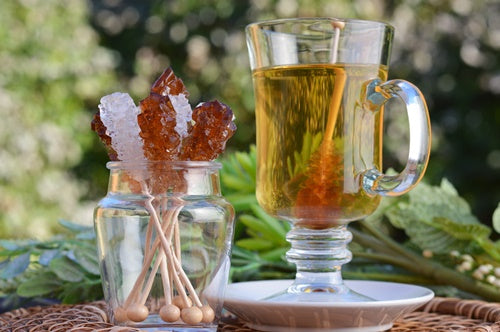Honey
The hardworking bees store any honey not needed to nourish themselves and their brood in honeycombs. Our curious forefathers discovered that this sugary mass is a delicious foodstuff way back in the Stone Ages. In ancient Egypt,
honey was considered the food of the gods and the source of immortality. Nowadays, we primarily enjoy it as a flavorful alternative to industrially produced sweeteners, for example, in a cup of tea. The honey we offer comes exclusively from beekeepers we trust.
Jams
A delightful medley of artisanal preserves that will elevate your teatime and beyond! Bursting with the finest, handpicked fruits and thoughtfully crafted. The jams offer a taste of pure, fruity indulgence.
Rock Candy
Basically, rock candy is nothing else than very big sugar crystals. You need a lot of expertise and time to make it. The knowledge of making rock candy was brought to us with the crusaders via the orient and Italy – the Arabians know the secret of the production of rock candy since the 9th century.
Back then as well as today a highly concentrated sugar solution is needed. It takes weeks for the crystals to grow. Until 1960 a yarn thread was used. These threads were placed into the sugar solution and sugar crystals began to grow along the thread. Today the procedure is different. The sugar solution is filled into big containers and small sugar crystals are added. The sugar solution now steadily washes around these crystals. New crystals develop and around these newer crystals and around these further new crystals keep on developing. This goes on and on until after 2-3 weeks real rock candy with a size of up to 2,4 cm is grown.
In East Frisia where you can find the most tea drinkers in Germany white rock candy is preferred. Some people like it so much that they eat the rock candy like sweets. Rock candy is also used for preparing rum punch or desserts, but the biggest part of those sweet gemstones is used for tea.
